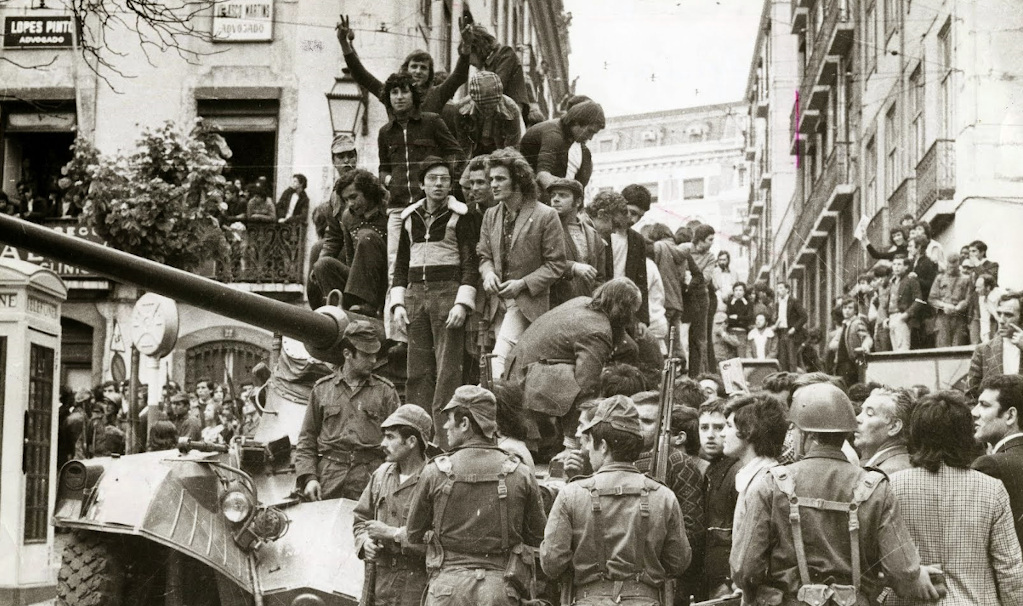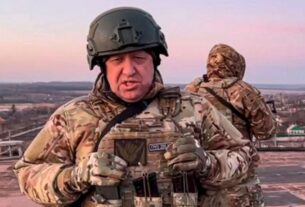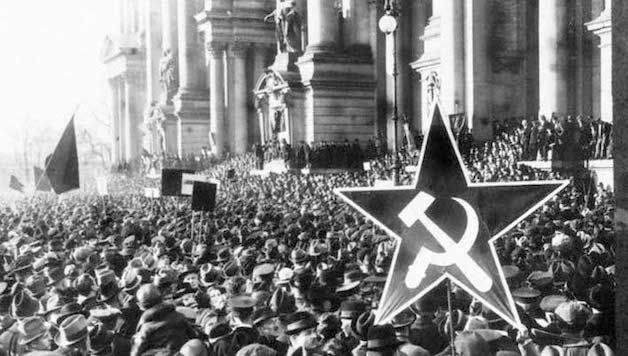Manny Thain is a member of the Socialist Party (CWI in England & Wales).
A half-century of fascist rule was swept aside in a day
This year marks the 40th anniversary of the military coup of April 25, 1974, which opened the doors to the Portuguese revolution of 1974-75. This anniversary is taking place at a time of widespread turmoil and general anger in Portugal, as the working and middle classes are bearing the brunt of the savage cuts imposed by the Troika and its political servants in the government. Despite all the lies and the vague promises of capitalist politicians, the austerity measures have only sunk the Portuguese economy into deeper crisis. They have brought society to an unprecedented social catastrophe of mass unemployment and poverty, run down public and social services, and mass emigration.
Despite years of ideological and economic setbacks, with the rise of neo-liberalism from the 1970s onwards and the following collapse of Stalinism on a world scale, revolutionary, socialist and communist traditions in Portugal still run deep. This is due in large part to the fact that the 1974 events remain the most recent workers’ revolution on the European continent, when large swathes of the population were leaning and struggling for a socialist transformation of society.
The following article, written ten years ago by Manny Thain for the 30th anniversary of the revolution, looks back on the lessons to be drawn from this turbulent period of Portuguese history. Indeed, in order to understand present events in Portugal, it is important also to look at the mistakes in the methods and program of the left, past and present.
In the last couple of years, workers and youth in Portugal have shown incredible determination in fighting back in defence of past gains and to oppose the vicious spiral of austerity imposed by big business. This has included four massive general strikes. However, as in many other countries, the trade union leadership and the left have not matched the expectations and the militancy displayed by the working class. They have failed to provide these struggles with a sustained political lead, and an escalating plan of action capable of defeating the Troika and the government’s attacks and of providing structural change in favour of the majority of the population.
The recent victory of the dockworkers following a two-year-long battle, in which they won the re-employment of 47 of their sacked comrades, an end to precarious contracts, and a new, more favourable, collective bargaining agreement, is a vivid example of the very militant and determined workers’ struggle taking place. Nonetheless, what has essentially saved the government so far has been the lack of a fighting and clear response from the union leadership, but also from the main left parties, the Portuguese Communist Party (PCP) and the Left Bloc.
For several years now, Socialismo Revolucionario (the CWI in Portugal) has been campaigning for a strategy of building a ‘united front’ of the left, to bring together the militant fighters of both organizations, along with the trade union and social movements, in a struggle to finish off the Troika-based policies and move towards a workers’ government on a socialist program. Such an outcome is what millions fought for 40 years ago. Building the political alternative, armed with the correct program and methods to achieve such a socialist change, in today’s Portugal and internationally, is the best way to commemorate this anniversary.
It started at 12.25 am on Thursday 25 April 1974 when the rebel song, Grandola Vila Morena, played on the radio. By early evening the end of dictatorship was announced. The Movimento das Forças Armadas (MFA), radical mid-ranking officers, had executed the plan devised by Captain Otelo de Carvalho. Troops secured Lisbon and the second city, Porto. Key installations were taken, ministers arrested.
The news of the regime’s downfall spread like wildfire. People flooded the streets. MFA vehicles were mobbed by adoring crowds. Thousands of school students marched, shouting “Down with fascism”. Red carnations, the symbol of the revolution, blossomed in rifle barrels and festooned the streets in this festival of freedom.
The ex-dictator, Marcello Caetano, cowered in National Guard barracks. He was the successor to the fascist regime consolidated in the early 1930s by António Salazar. Paramilitary groups terrorized left-wing and industrial militants. Independent trade unions and the right to strike were illegal. The secret police had a massive network of agents and informers. Torture was systemic.
Even under these conditions, workers resisted. Illegal trade unions operated. The Partido Comunista Português (PCP) maintained a clandestine organization. Student protest flared up.
Colonial revolution
But it was the armed African liberation struggles – especially Angola, Guinea-Bissau and Mozambique – begun in the early 1960s, which drove the final nails into the coffin of the fascist regime. Many mid-ranked officers had been influenced by the Marxism they read in counter-insurgency training. Radicalization continued in Africa with the brutal repression meted out to the people fighting for their freedom. A policy of fast-tracking new officers fuelled the anger.
For Caetano’s regime, the colonies meant the difference between Portugal being regarded as an insignificant nation or an international power. But Portugal was also the poorest country in Western Europe, its economy underdeveloped, centred around the export of sardines, textiles, cork and wood. The wars consumed over 40% of the budget.
The MFA set up a ’junta of national salvation’ to rule until a provisional government was formed. Elections were promised within a year. It announced freedom of association and expression, and an amnesty for political prisoners.
Spínola and the MFA
General António de Spínola was made acting president. The son of a friend of Salazar, Spínola had impeccable fascist credentials. He had, however, called for the easing of direct colonial rule, which gave him a certain amount of support.
The MFA reflected a wide range of political views. The lefts, including Carvalho and Vasco Gonçalves, were strongly influenced by the ’socialism’ (Stalinism) of Eastern Europe, Cuba or Algeria. Others, such as Melo Antunes, were linked with the social democrats around Mário Soares.
Having suffered at the hands of bosses and landowners linked to the regime, workers drove them out of the factories and off the land. The editor of the daily, Diário de Notícias, was forced out on 7 June after print workers seized the presses, publishing a front-page article exposing his fascist connections. Homeless people occupied empty properties. Shipyard and underground workers went on strike for a 50% pay rise. Car workers won a 40-hour week. Bakery and textile workers struck. Train and tram conductors refused to collect fares.
Spínola’s coalition included politicians with ties to the old regime – for example, the new, conservative Partido Popular Democrático (PPD) – alongside the PCP, Partido Socialista (PS) and the MDP/CDE (linked with the PCP). Mário Soares, PS leader – a well-known lawyer funded by social democratic parties (and the CIA) – returned from exile on 28 April. Álvaro Cunhal, PCP leader, got back on 30 April after 14 years in exile in Eastern Europe. Almost immediately, they were sharing power.
Spínola aimed to use the PS and the PCP to turn back the revolutionary tide. Both parties saw explosive growth. PS membership rose from 200 in April 1974 to 60,000 in early 1975, its support mainly from white-collar workers and professionals. The PCP strongholds were among agricultural workers in the south, and in the industrial centres.
Horrified and impotent, the imperialist powers looked on as the PCP joined the government of a Nato country. They feared the effects of a ’communist’ state in Western Europe, especially on Franco’s dying dictatorship in Spain.
There was little base for reaction, the US superpower had just emerged humiliated from Vietnam, and the worldwide economic recession limited the scope for action.
The workers’ parties
Unfortunately, influential leaders like Cunhal based themselves on the methods of the Soviet Union’s ruling bureaucracy, not on independent mass action by the workers towards socialism. The working class was mobilized as and when its support was required, while PCP leaders relied on their influence with the MFA left, exerted in meetings behind closed doors.
The radical measures taken by the MFA were in response to the mass movement from below rather than as part of a conscious socialist program. A minimum wage of £55 a month affected 65% of the workers. Controls on prices and rents were introduced, taxes imposed on under-utilized farmland on the big estates. A thousand leading company directors were dismissed.
Thirty thousand postal workers struck from 17-21 June. Rail, electricity, shipping, and major industries saw strikes. Frantically trying to control the movement, the PCP tried to hold back the workers.
Its newspaper, Avante, criticized bosses for conceding wage increases which were “too high”! And the PCP helped introduce a trade union law which both legalized and attempted to restrict industrial action. Workers had the right to picket but not to occupy or organize solidarity action.
The PS cynically condemned the restrictions – part of a strategy to win over the working class, away from the PCP and far-left. Soares frequently called for the ’socialist transformation of society’. Once the revolutionary heat had cooled, however, he planned to direct the movement down a safe, reformist, capitalist road.
Attempted coup
Spínola called a ’silent majority’ demonstration for 28 September. He was testing the balance of power. Rumours circulated of a right-wing coup. But armed workers set up roadblocks to stop reactionaries moving on Lisbon. And as the silent majority evaporated, a dejected Spínola called it off. Right-wing officers and civilians were arrested.
Political confrontations were becoming increasingly violent. The first national congress of the right-wing Centro Democrático Social (CDS – based around members of the former regime), in Porto on 25 January, was besieged by left-wing protesters and cancelled. Soldiers sided with the demo.
On 7 March, a PPD meeting in the industrial city of Setúbal was broken up. Two protesters were shot dead in clashes with the police.
Spínola made one more pathetic bid for power, on 11 March 1975. But the paratroopers he mobilised mutinied. The fact that six members of the Espírito Santo banking family were implicated in the coup fiasco fuelled further outrage.
The colossal economic and political power wielded by the banks meant that they were particularly hated by workers and much of the middle class.
The bank workers’ investigation revealed that the Espírito Santo family had siphoned off money allocated to provide jobs for demobbed troops, to safeguard the family’s wealth in the event of nationalization. It was funding right-wing parties. Workers occupied the banks, preventing the bosses from removing documents or transferring funds. On 14 March, Portuguese banks were nationalized!
On 11 July, the PS withdrew from the government in protest over the takeover of the pro-PS República newspaper by Communist print workers. Soares accused the armed forces of attempting to impose a ’communist-style police state’. On 17 July, the PPD also withdrew, and the fourth coalition government in 15 months collapsed.
Matters were coming to a head. A triumvirate of President Francisco de Costa Gomes, Prime Minister Gonçalves, and Carvalho gave the impression that the PCP/MFA-left had been strengthened in the corridors of power. But right-wing parties were growing in confidence, with attacks on PCP and MDP-CDE offices and members intensifying, particularly in the north.
Counter-revolution in ’democratic’ clothes
The MFA pro-Soares wing around Antunes was emboldened. On 29 August, Gonçalves was removed and a group supported by the PS and PPD emerged to lead the MFA.
MFA troops refused to intervene when 30,000 construction workers surrounded the assembly on 13 November demanding higher wages and the nationalization of building sites. Carvalho was dismissed and PCP members were kicked out of the ministries.
Right-wing groups mobilized farmers – mainly poor smallholders from the north – setting up barricades on 24 November to try to isolate ’Red Lisbon’. Next day, troops under right-wing Lieutenant Colonel António Eanes occupied military bases. A state of emergency was called.
’Order’ was restored. However, it would take years of militant defensive struggles before the bosses could take back what they had been forced to concede: far-reaching reforms on land, health, education, housing, social services, wages and conditions, and the nationalization of three-quarters of the economy.
Lessons
Without a revolutionary program, the Portuguese working class had ensured that 50 years of brutal dictatorship ended – another magnificent achievement. The scale of the movement, however, meant that it could have achieved much more.
A socialist revolution was on the agenda. A clear socialist direction – which can only be provided by a revolutionary party respected by the working class – was missing. Nonetheless, Portugal’s workers set a high standard – maybe a world record – for revolutionary initiative, energy and determination. They will have to call on these rich traditions in many battles to come.
What the CWI said in 1974
“Only a revolutionary leadership is missing”
Militant, the forerunner of the socialist, carried articles immediately after the 25 April coup.
They were translated into Portuguese and circulated in the workers’ parties, particularly the Socialist Party and the Young Socialists. The material explained the criticial role of the workers’ parties and their leaders in successfully transforming society along socialist lines. In particular, it compared this task confronting the PCP and PSP leaders with the successful revolution carried out in Russia by the Bolsheviks in 1917.
“The Socialist Party has had no tradition of struggle under the Salazar/Caetano regime. Nevertheless, it will undoubtedly grow into a mass workers’ movement under the present conditions, just as the Mensheviks [a reformist party] became a mass force in February 1917… The millions of politically naive, untutored masses pouring on to the political arena will not at first distinguish between the different working-class tendencies. That makes it all the more vital that the Communist Party, with its prestige among industrial militants, should tirelessly and patiently explain the danger of leaving power in the hands of the capitalists.
“That is how the Bolsheviks won the overwhelming support of the Russian workers within a few hectic and stormy months and led the world’s first socialist revolution in conditions far less favourable than those existing today in Portugal.”
… “So far the role of the CP has been to limited to policing the workers in the interests of the junta. The CP has condemned the workers’ spontaneous action in occupying the factories, and now a planned steel strike has been called off after an appeal by the CP.”
… “If either the Socialist or the Communist Party were revolutionary parties, the workers could be in power today. But instead, we see all the authority of these parties prostituted at the service of the capitalist class.”
Free elections
The elections on 25 April 1975 were the first based on universal suffrage in Portugal’s history.
More than six million people were eligible to vote.
A massive 91.73% voted. The PS gained 37.9% (115 seats), PPD 26.4% (80), PCP 12.5% (30), CDS 7.7% (16), MDP-CDE 4% (5), UDP 0.8% (1 seat). In total, 58.5% had voted for left-wing parties (including those which did not win seats).
This showed the widespread support for socialist ideas in general. There was also a deep suspicion of Stalinism. The model provided by the former Soviet Union was unattractive to the working class, and the PS exploited this genuine fear for its own gain.



